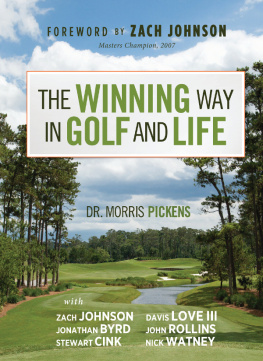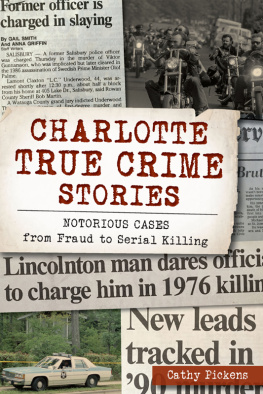Beth Pickens - Make Your Art No Matter What
Here you can read online Beth Pickens - Make Your Art No Matter What full text of the book (entire story) in english for free. Download pdf and epub, get meaning, cover and reviews about this ebook. year: 2020, publisher: Chronicle Books LLC, genre: Romance novel. Description of the work, (preface) as well as reviews are available. Best literature library LitArk.com created for fans of good reading and offers a wide selection of genres:
Romance novel
Science fiction
Adventure
Detective
Science
History
Home and family
Prose
Art
Politics
Computer
Non-fiction
Religion
Business
Children
Humor
Choose a favorite category and find really read worthwhile books. Enjoy immersion in the world of imagination, feel the emotions of the characters or learn something new for yourself, make an fascinating discovery.

- Book:Make Your Art No Matter What
- Author:
- Publisher:Chronicle Books LLC
- Genre:
- Year:2020
- Rating:4 / 5
- Favourites:Add to favourites
- Your mark:
- 80
- 1
- 2
- 3
- 4
- 5
Make Your Art No Matter What: summary, description and annotation
We offer to read an annotation, description, summary or preface (depends on what the author of the book "Make Your Art No Matter What" wrote himself). If you haven't found the necessary information about the book — write in the comments, we will try to find it.
Make Your Art No Matter What — read online for free the complete book (whole text) full work
Below is the text of the book, divided by pages. System saving the place of the last page read, allows you to conveniently read the book "Make Your Art No Matter What" online for free, without having to search again every time where you left off. Put a bookmark, and you can go to the page where you finished reading at any time.
Font size:
Interval:
Bookmark:


For Ali Liebegott, all Tier Ones, and every artist.
Copyright 2021 by Beth Pickens.
All rights reserved. No part of this book may be reproduced in any form without written permission from the publisher.
Library of Congress Cataloging-in-Publication Data available.
ISBN 978-1-4521-8415-9 (epub, mobi)
ISBN 978-1-4521-8295-7 (paperback)
Design by Allison Weiner.
Typesetting by Frank Brayton.
Chronicle books and gifts are available at special quantity discounts to corporations, professional associations, literacy programs, and other organizations. For details and discount information, please contact our premiums department at or at 1-800-759-0190.
Chronicle Books LLC
680 Second Street
San Francisco, California 94107
www.chroniclebooks.com
I love artists. You are my favorite people and my life is more livable because of your work. Im so grateful for what you make and put into the world. All my life, art has facilitated my ability to have feelings during disorienting grief, challenged me to grow even when I didnt want to, introduced me to crucial information I couldnt find elsewhere, and helped me become more of myself. The full scope of human emotion becomes available to me and is then intensified through art. Art tells me I am not alone in any feeling, thought, or experience. Art has saved my life and the lives of many of my loved ones.
After I finished graduate school in counseling psychology, I assumed I would become a licensed therapist working with the general publicbut I noticed this growing force pulling me toward artists. I needed to be immersed in art and artist communities. Besides my graduate school training, my twenties comprised womens studies and gender studies, reproductive-justice organizing, queer activism, disability work, and a full-time job in a university womens center. I have always been deeply devoted to a constellation of social issues, trying to commit myself to them all. Over time, I became burned out by so much social justice work, but artists and arts advocacy never burned me out. Art was, for me, a consistent way back into working for change. Engaging with art, listening to artists talk about their work, and reading about art histories fueled me, replenishing my emotional coffers when they were drained by our dominant culture and political system.
Artwork reflects the lived experience, imagination, and ideas of the artist. Because I tend to seek out work by marginalized artists, the art I love often reflects politicized experiences. Works by women, queer and trans artists, artists of color, artists with disabilities, and those who have experienced trauma and displacement necessarily challenge the normative story of our world because they reflect a perspective that differs from the default artistic gaze (historically assumed to be white, male, cisgender). In every realm of community building, justice seeking, and social change work, I find artists furthering and transforming conversations, illuminating new ways to think, feel, connect, and live.
It occurred to me that artists are central and active throughout activism, critical thought, and community building, and that serving artists could enable me to approach all aspects of justice work in one lifetime. By supporting many artists practices, I could be connected to peoples work for justice and equity across many urgent concerns. The artists I serve go on to impact much larger audiences and communities than I do as one person.
The word artist is fraught for many people, particularly for people with marginalized identities and experiences who never saw themselves reflected in any professional art contexts. Its loaded with meaning and cultural implications, and some people may shy away from using it as an identifier. Perhaps they dont make money from their art or dont spend what they believe to be enough time on their practice. The world showed them that art was only for white people, wealthy people, men, people who grew up around art. They didnt go to art school and they dont consider their opportunities to perform, exhibit, or present their work professional enough. Maybe theyve never had an opportunity to share their work with the public. No one has paid them for their creative work and they fear their work isnt good. Their families and friends scoff at the concept of being an artist, or perhaps artists with real careers surround them. These are just a few of the reasons Ive heard from artists as to why they dont use the identifier. Making the art seems more certain than calling oneself an artist. Often, it is easier to do than to be.
What is my definition of an artist? The quick and dirty is this: Artists are people who make art. My deeper understanding is that artists are people who are profoundly compelled to make their creative work, and when they are distanced from their practice, their life quality suffers. Making their work is a way to take care of themselves, communicate, process information, engage a spiritual interior, or strengthen their relationship to themselves and others. Thats a tall order though, and its totally fine if you relate to the short definition: Artists make art.
For the purposes of this book, I am using artist as the word for people who have creative practices throughout and beyond every nameable discipline. This includes, but is not limited to, people who make music, visual work, sound, media, and experiences, and those who write, illustrate, design, dance, perform, cook, organize, and bring people together for transformation. You might not relate to the identity of artist, but I want you to consider using the word while you read this book. Whatever baggage or fears are related to calling yourself an artist, table them while you read. Youre an artist if you make art. Its likely this book appeals to you because youre an artist, so embrace the word for now. Throughout the subsequent chapters, I will unpack a number of major roadblocks in artists lives, including those that dissuade you from identifying as such.
I believe artists have three fundamental needs in regard to their creative life. I challenge you to tend to these needs while you use this book. First, artists need to make their work, so please be sure to spend time each week in a creative practice, whatever that means for you. Even a half an hour can be significant. Prioritize some time each week to be with yourself in this way, just as you make time to take care of your body, your home, your pets, your finances, and other people. Next, artists need a community of other active artists who want good things for themselves and one another. Relationships to other artists are critical to your practice and this will show up in multiple chapters throughout this book. Please maintain contact, make plans, and spend time with other artists. Last, artists must take in art and information, in every form. Spending time with others work will do for your creative interior what vitamins do for your body. Go out into your world and have experiences.
At this point in my career, I have spent thousands and thousands of hours in consultation with, and raised millions of dollars for, artists. The artists I have worked with over the past decade come from every identity, discipline, phase of career, financial reality, and family system one could imagine. The following perspectives, anecdotes, lessons, and solutions come straight from our work together; this book reflects the lives and words of hundreds of different artists. I could not have written this book without their voices in my head, their lives on my mind. Though every artists constellation of dreams and fears is unique, their obstacles are often similar. This is how Ive sourced the focus for each of the twelve chapters. Ive selected the challenges that come up most frequently in my one-on-one consultation with artists and mapped out both the problems and the solutions my clients and I have identified.
Next pageFont size:
Interval:
Bookmark:
Similar books «Make Your Art No Matter What»
Look at similar books to Make Your Art No Matter What. We have selected literature similar in name and meaning in the hope of providing readers with more options to find new, interesting, not yet read works.
Discussion, reviews of the book Make Your Art No Matter What and just readers' own opinions. Leave your comments, write what you think about the work, its meaning or the main characters. Specify what exactly you liked and what you didn't like, and why you think so.






